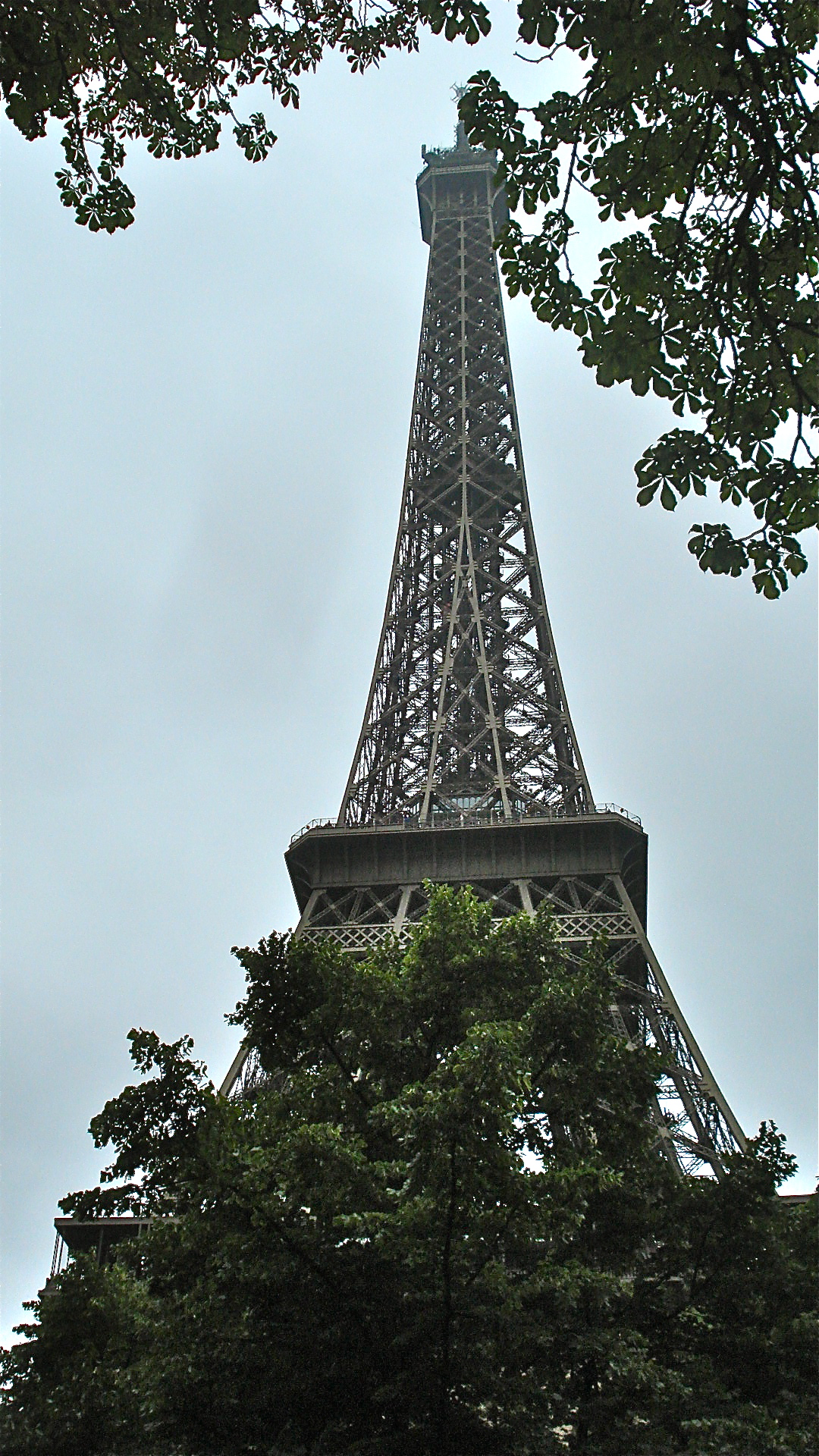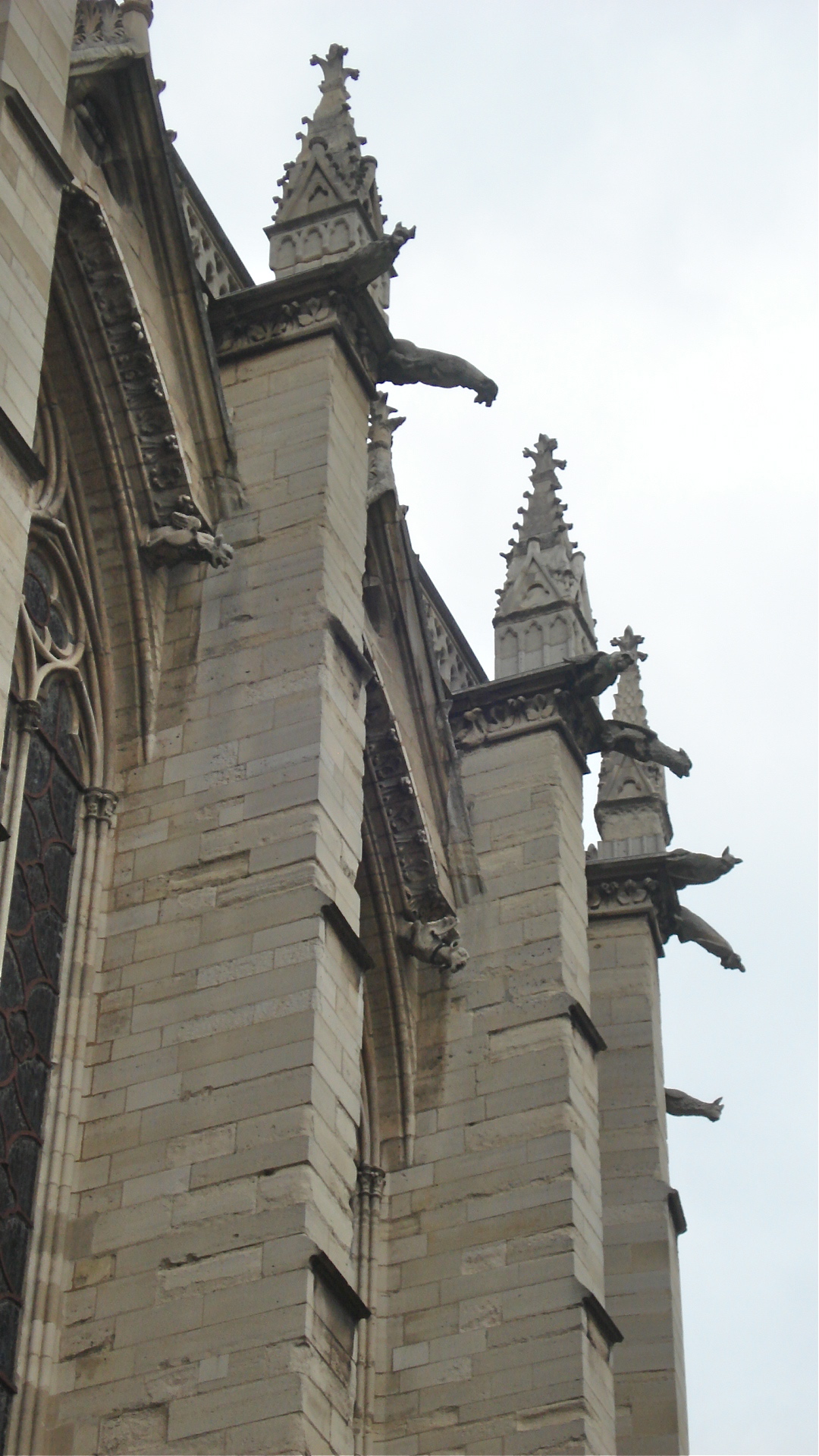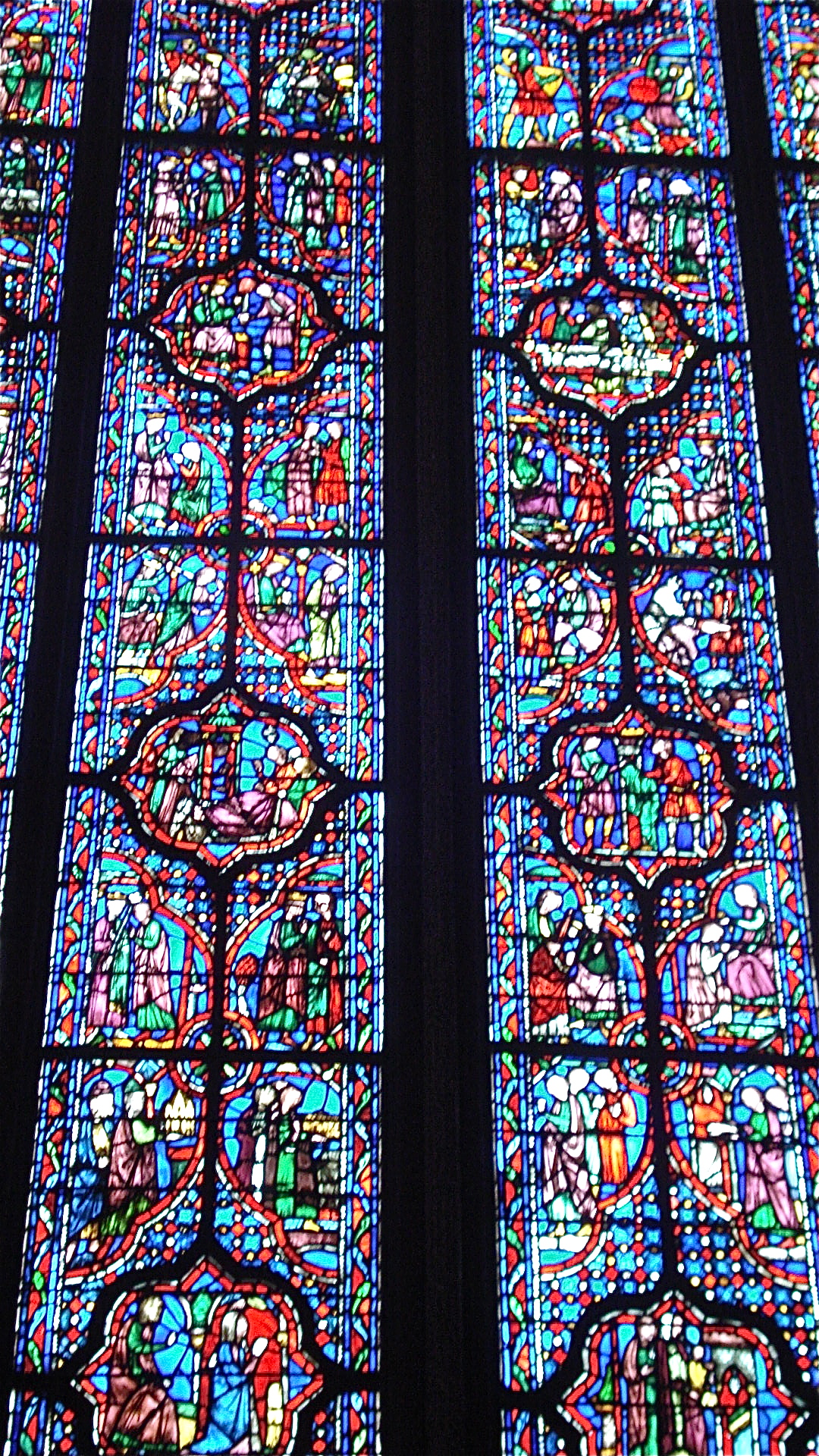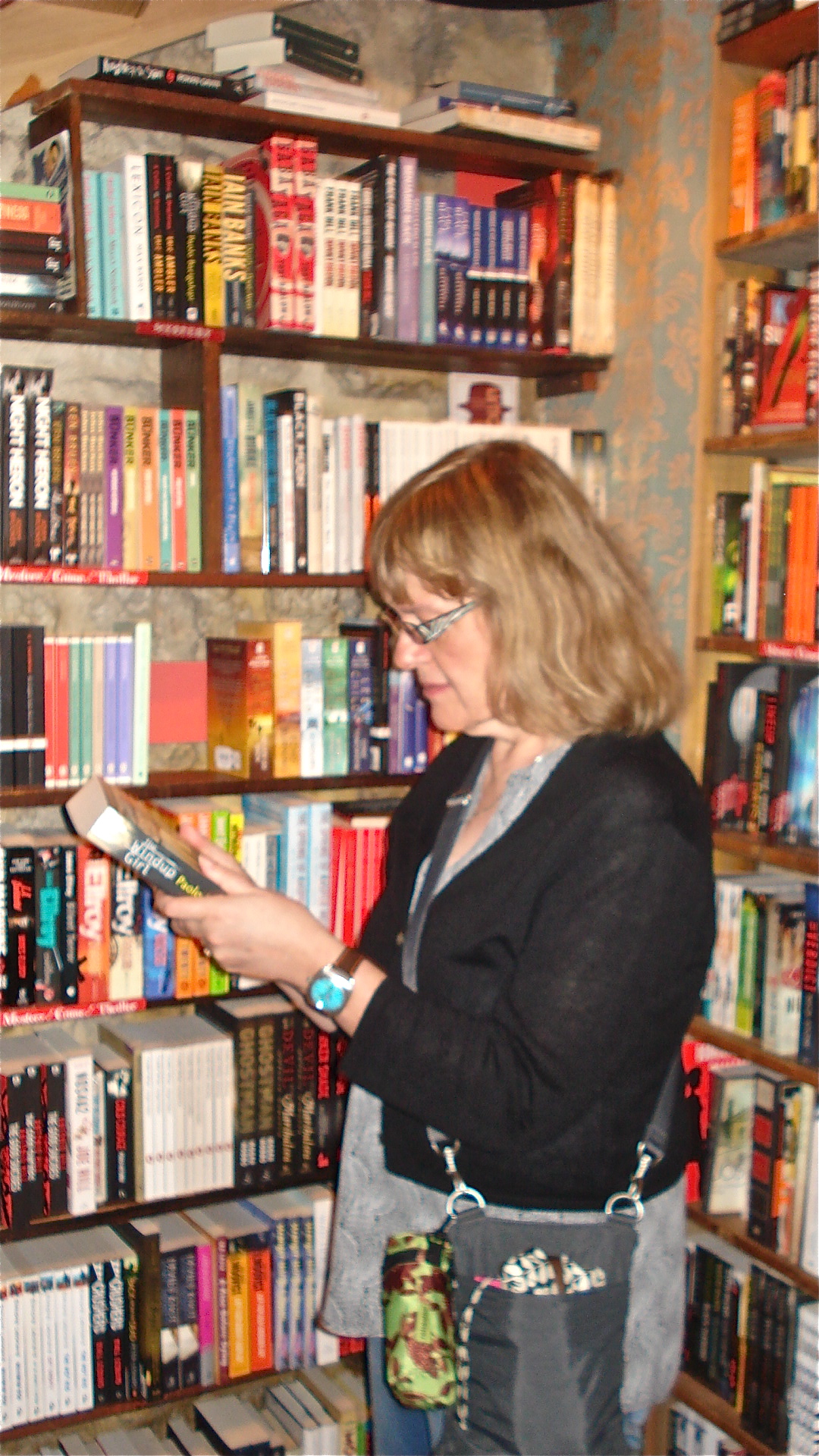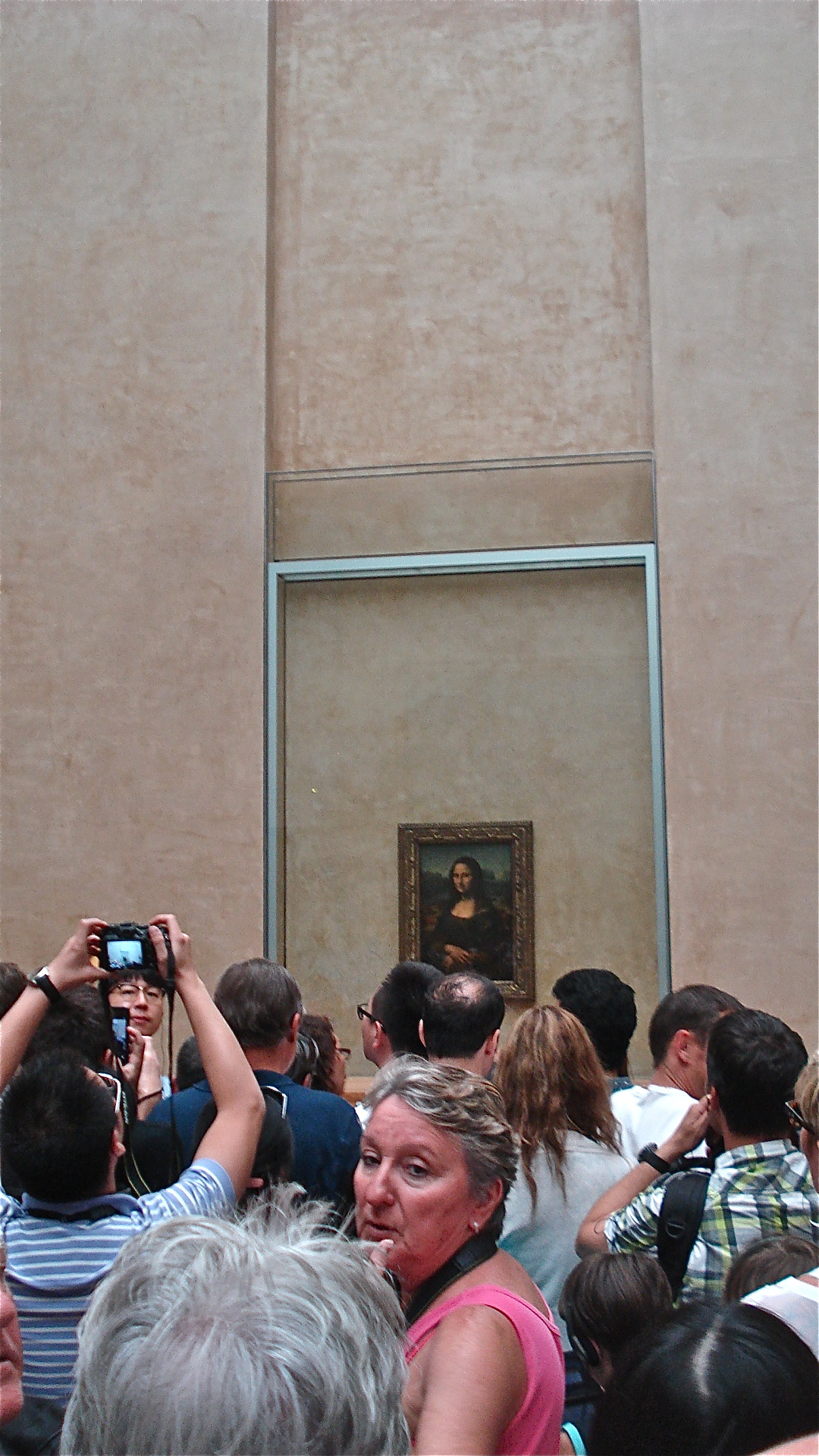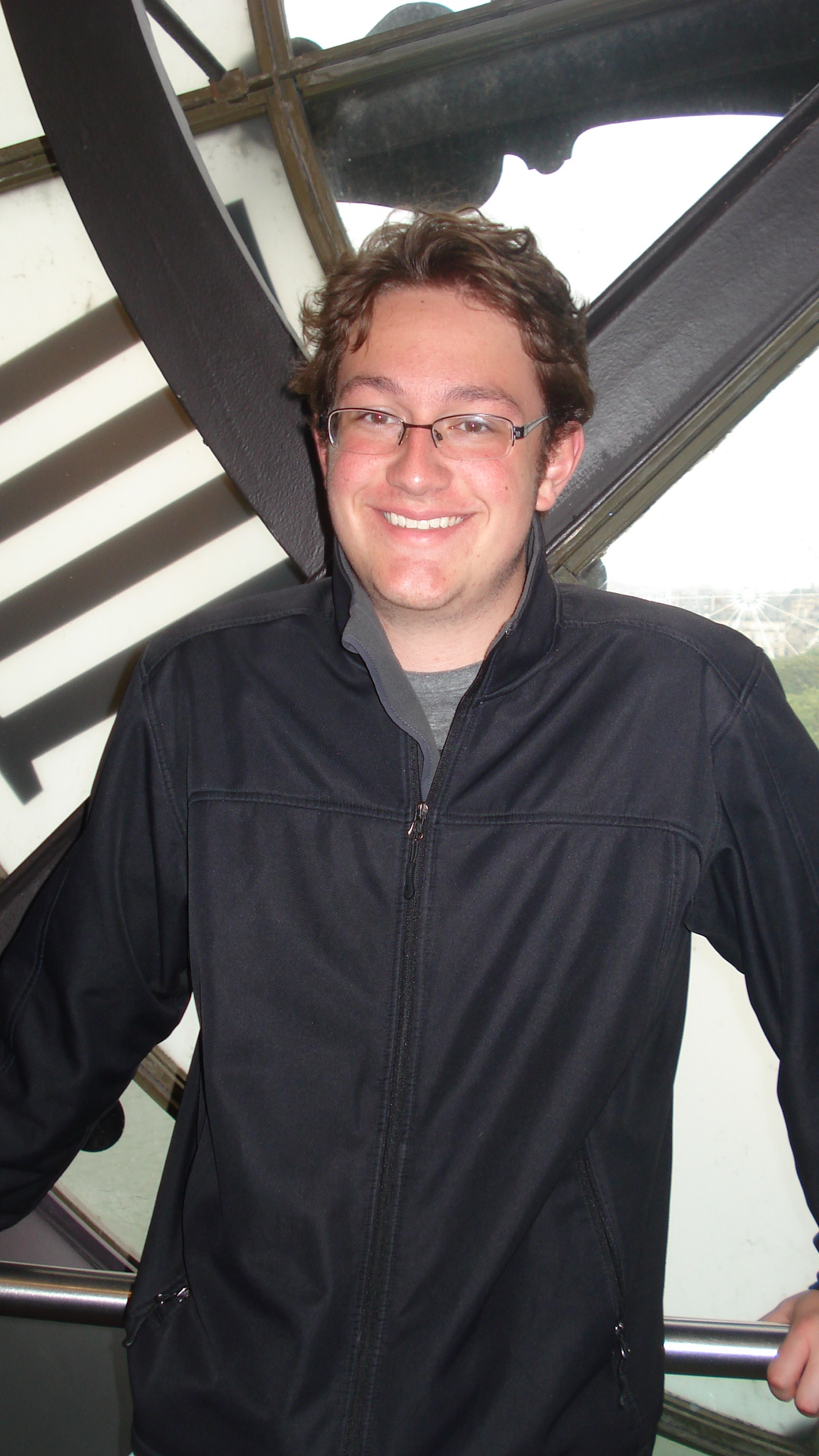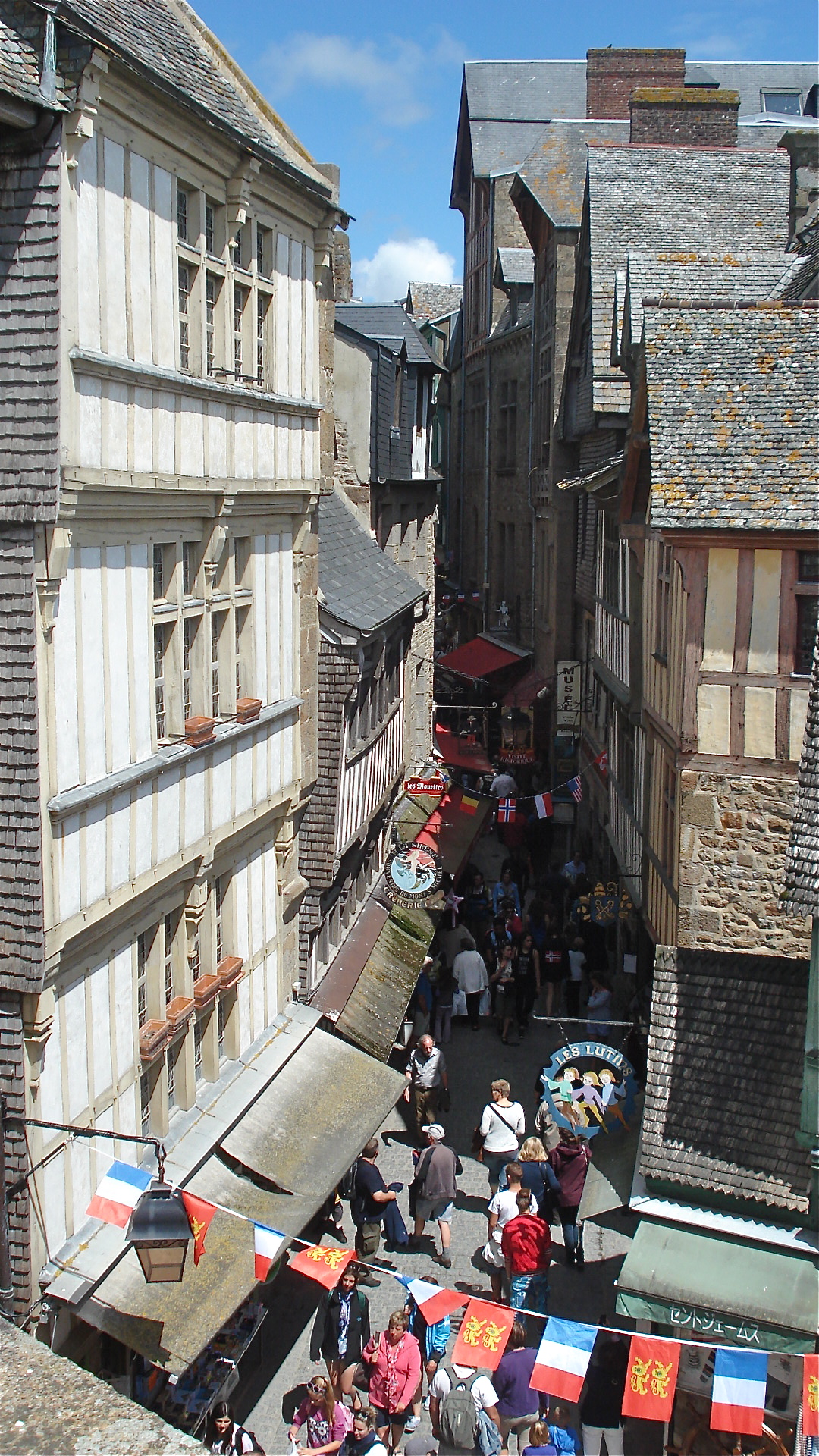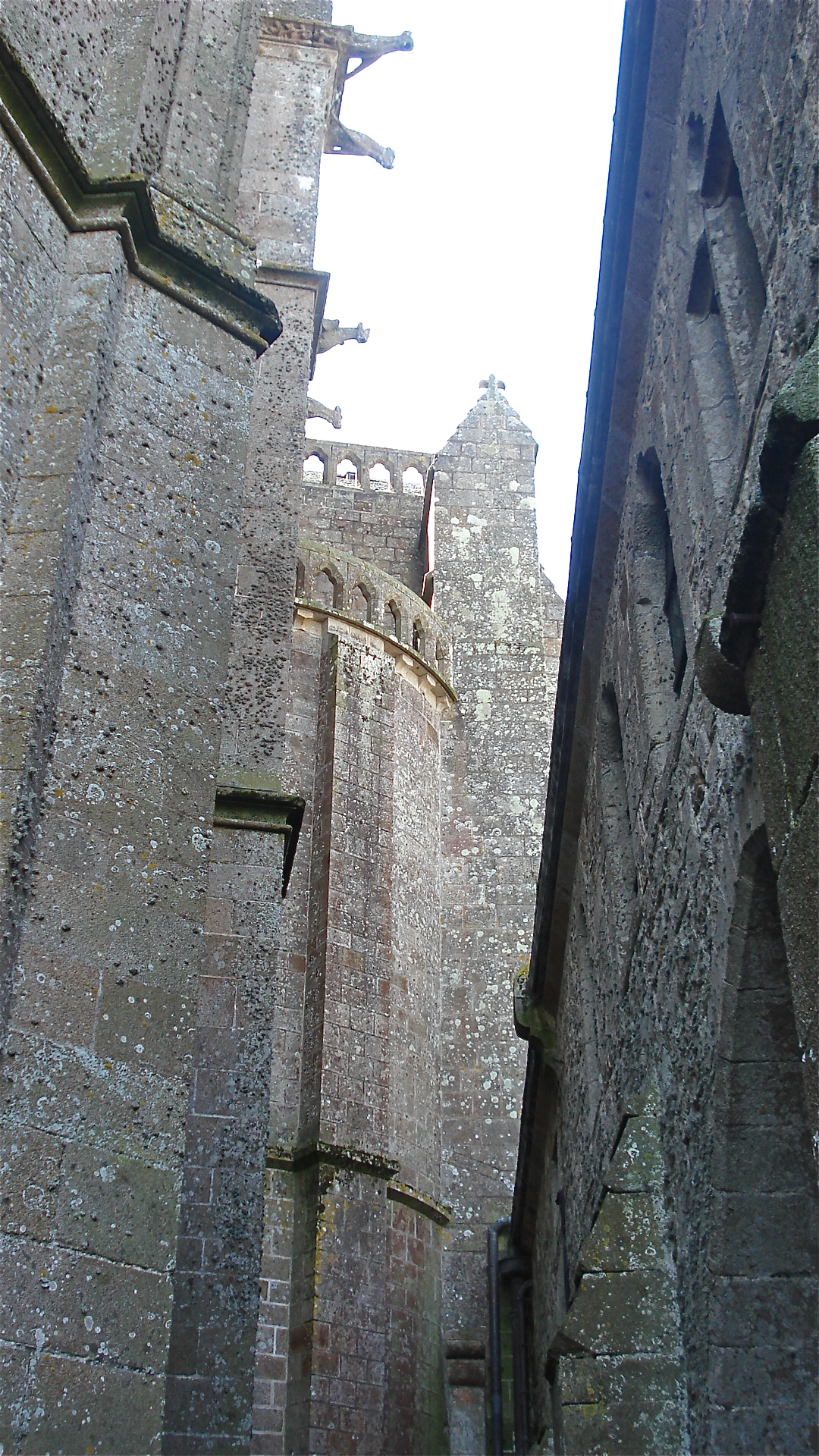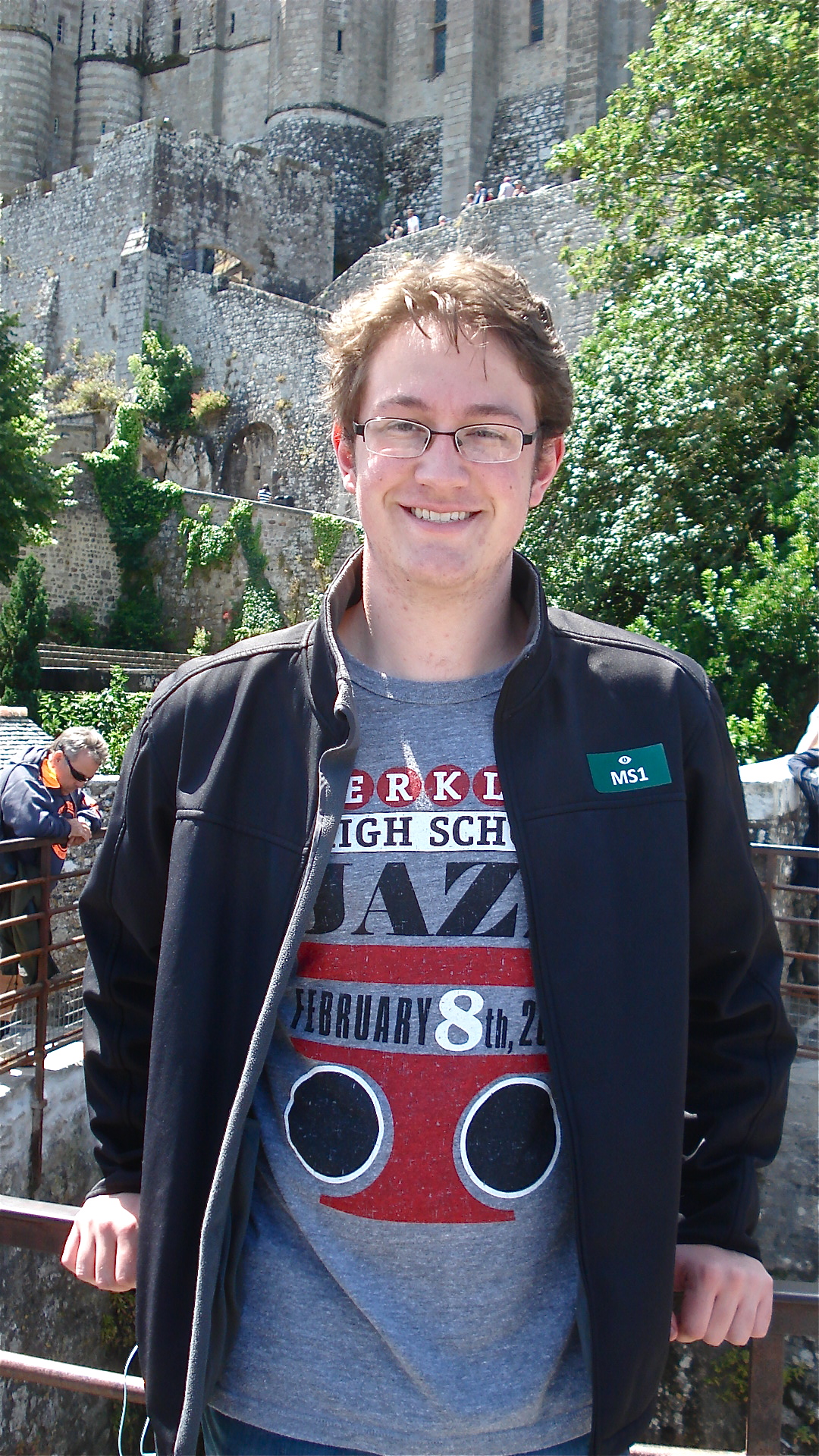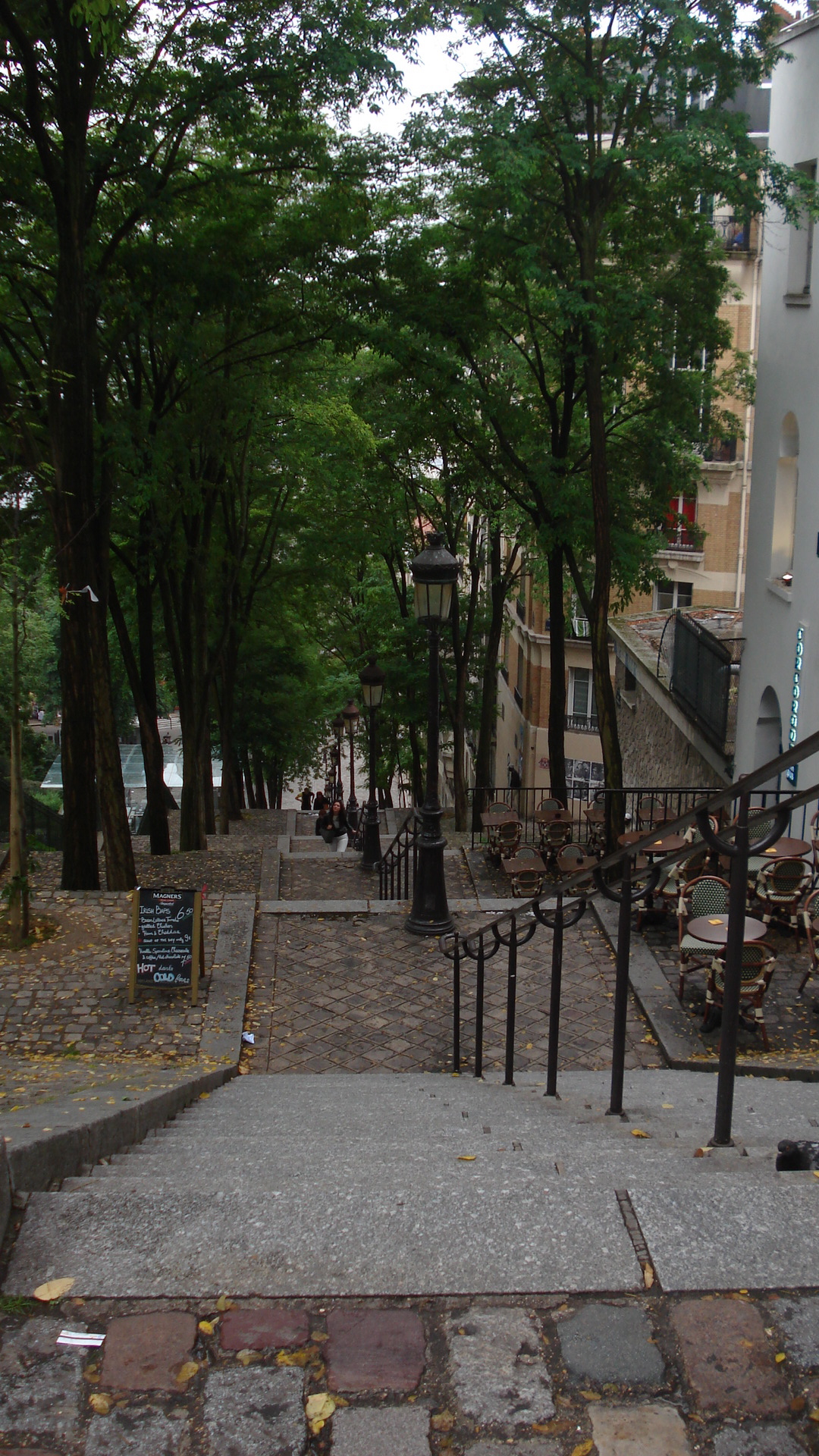Our Trip to Paris, Bruges, and Amsterdam—Part I: Paris
To celebrate my retirement and Ethan’s graduation from high school, we decided to go on an unforgettable trip, but where? Our problem was that our son, John, would not be able to accompany us because he had a job all summer as a counselor in a summer camp in the backwoods of Maine—a job that is good for him and one that he loves. We decided to choose a location for our trip where John would not want to go and would feel less left out, but we finally decided that his choices for us--Afghanistan or Newark--were not appealing; so, tough luck, John, we went to Europe. We decided to visit Paris and then Amsterdam, but our good friend, Alwina Bennett, suggested that if we were going to take the train to Amsterdam, we stop off for awhile at the charming town of Bruges in Belgium. Thanks for the good advice, Alwina. Beth and I had each been to Paris three times before, once together. Ethan had not been to Paris, and none of us had visited Bruges or Amsterdam.
As you might surmise, the first photo in this story was not taken in Europe but is of John (in the blue T-shirt) and his group of charges at Camp Runamuck. We think it looks like the cast for a summer-camp comedy movie. In any case, I included it as a nod to John, who could not join us
Part 1: Paris
I think of most poems as songs. I think they would often go well to music. Likewise, most good song lyrics are poems and I think can hold up when recited without the music. So here is my poem for Paris—by Cole Porter:
I love Paris in the springtime
I love Paris in the fall
I love Paris in the winter when it drizzles
I love Paris in the summer when it sizzles
I love Paris every moment
Every moment of the year
I love Paris, why oh why do I love Paris?
Because my love is near.
However, for our visit, we would change the words slightly:
I love Paris in the winter when it drizzles
I love Paris in the summer when it also drizzles.
It rained almost every day of our trip, though not in downpours; more accurately it drizzled, better than the sizzling 95 degree Fahrenheit in Paris at the current time.
We used the Metro in Paris and streetcars in Amsterdam, but mainly we walked, and we walked. Actually, we enjoy that way of seeing a city that we don’t know so well. Our hotel was right next to the Sorbonne and near the Pantheon, in the Latin Quarter. We couldn’t get enough of small, narrow streets and the limestone buildings rising around us. It was a crowded time of year in all three cities, with tourists, but we usually did not mind the crowds; they simply provided more people watching.
Although we had some extraordinary meals in delightful, little restaurants, we ended up doing a lot of grazing as we wandered along—pasteries and crepes in Paris, chocolate, waffles, and mussels in Bruges, and cheese in Amsterdam—well actually, everything everywhere. We couldn’t help ourselves—walk off 100 calaries; ingest 200 calaries; repeat.
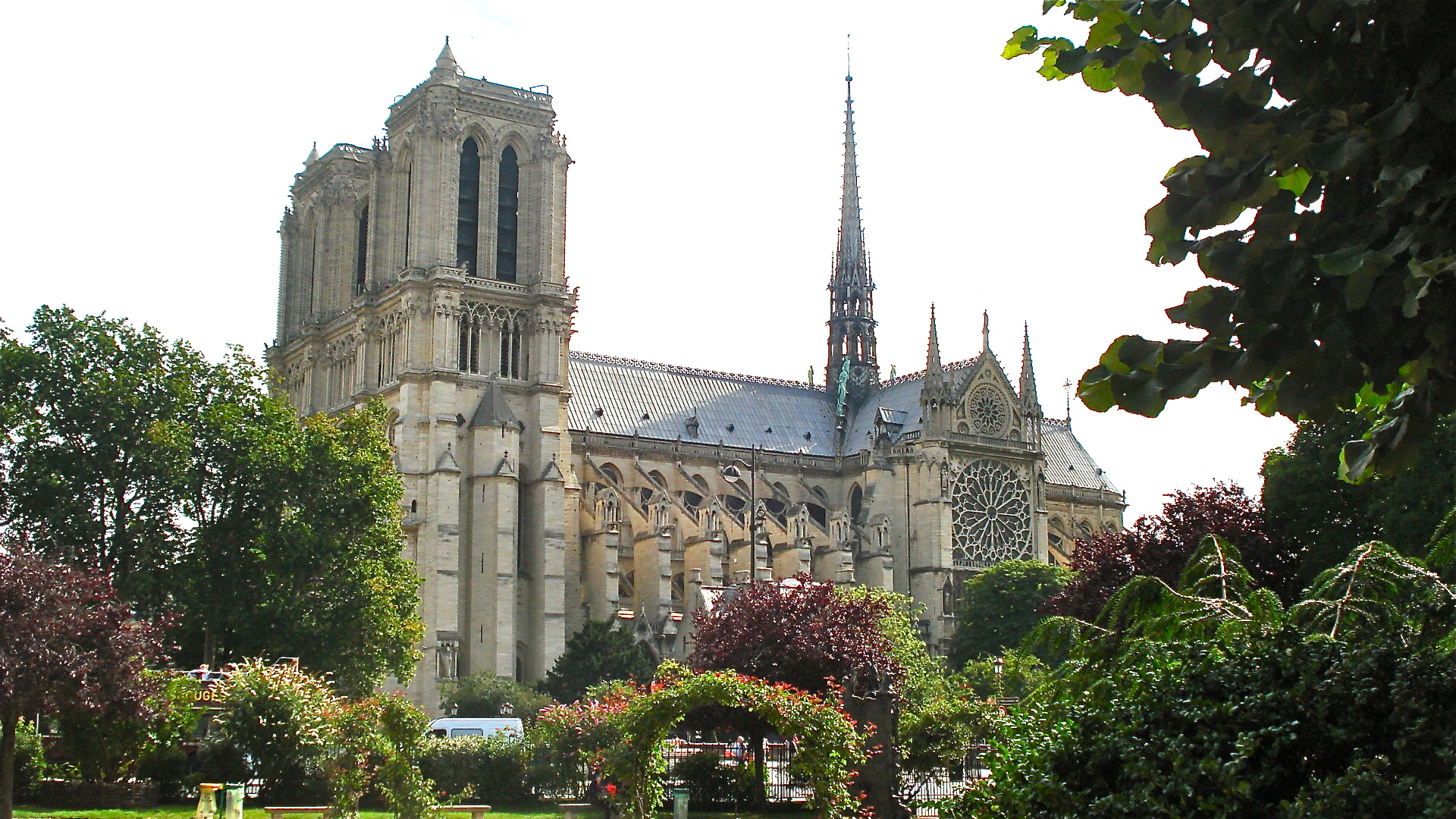

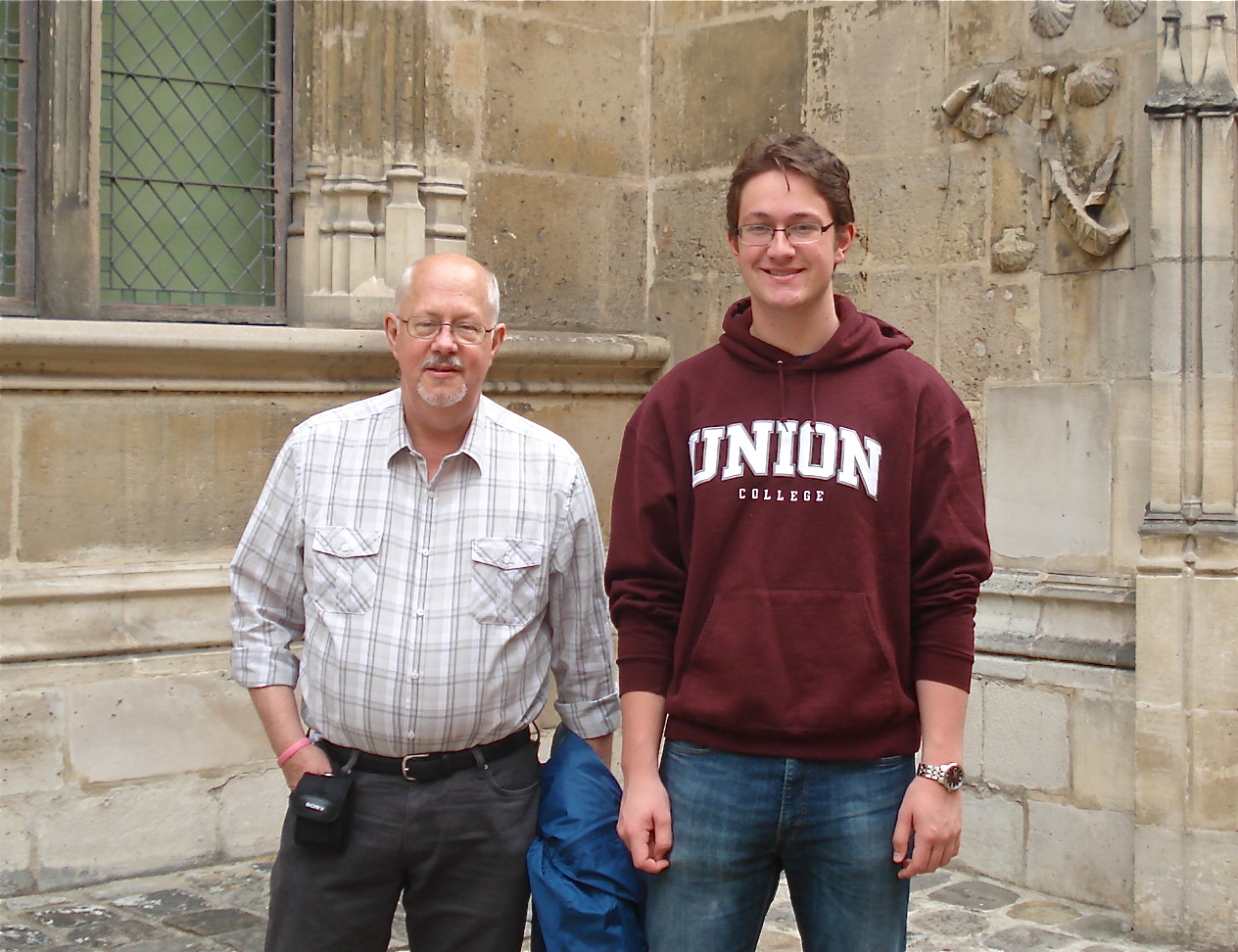

The first day we visited Ile de la Cite, including the bird market and Notre Dame Cathedral. The highlight for me was Sainte Chapelle to see what I consider to be the most beautiful stained glass windows in the world. Unfortunately, we just missed a concert at Sainte Chapelle at which a cellist had played several of the Bach solo cello suites. It did remind me of Beth’s and my previous visit to Paris, a number of years ago, when we heard a similar concert of Bach cello suites in a Church with the most beautiful acoustics.
That first night, we met Alwina Bennett, who had arranged for dinner at a small restaurant—Le Temps des Cerises—near the Bastille monument. Alwina stays in Paris often and knows the city like the back of her hand. The meal was one of the best, with escargot, veal, scallops and risotto, desserts to die for, and great conversation. Afterwards, we all waddled home
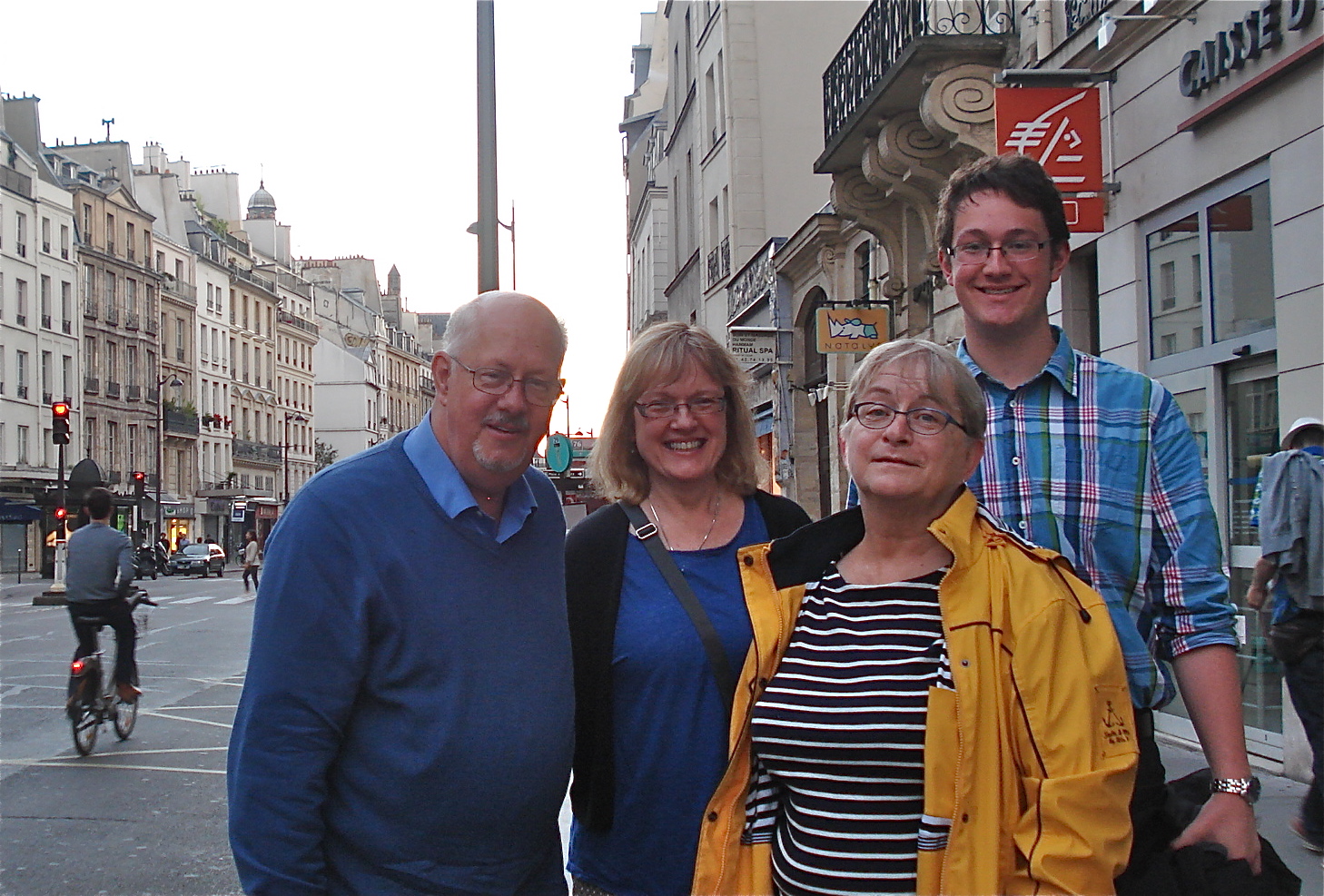
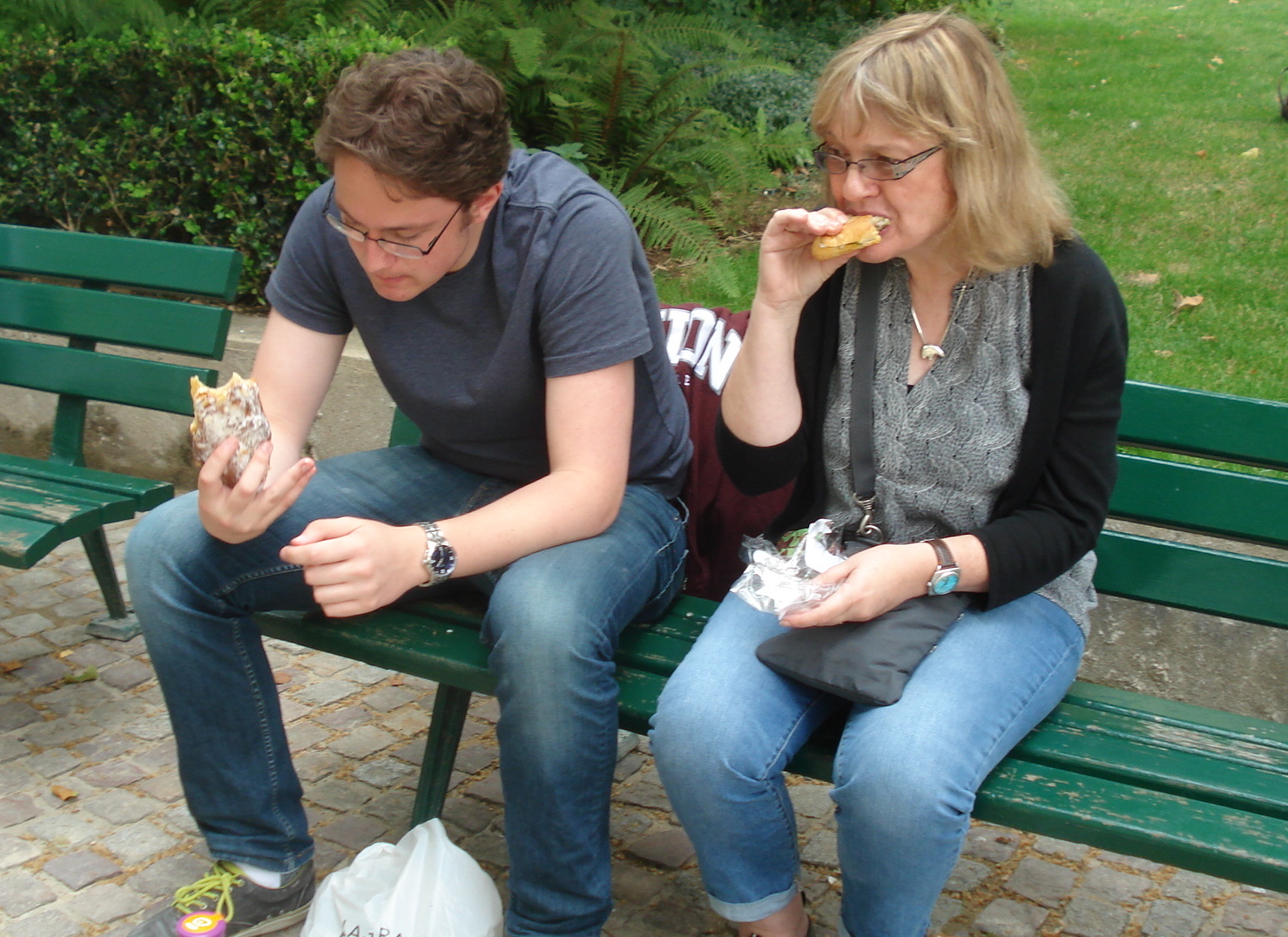
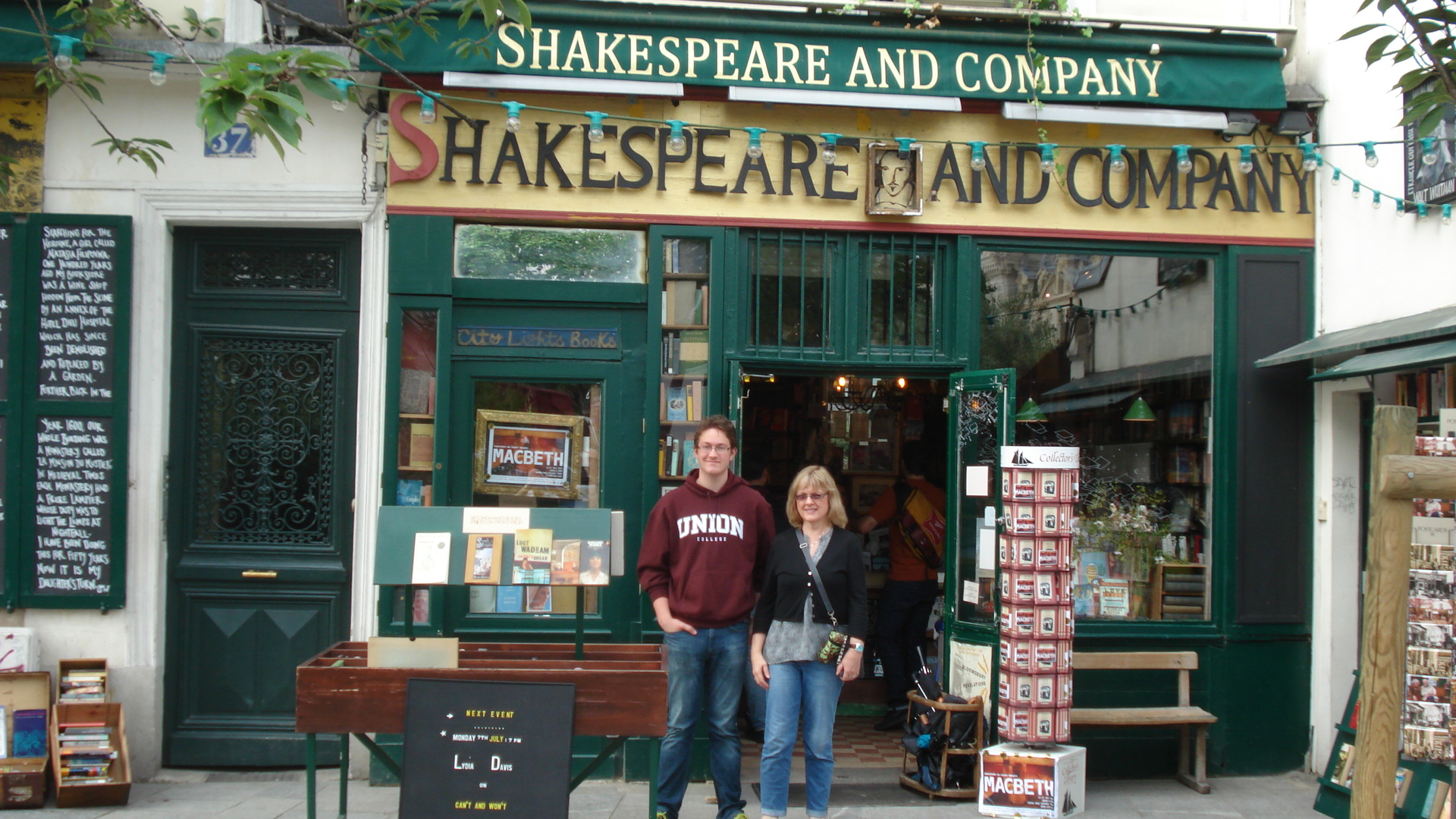
The next day we wandered some more, ate lunch in a park after buying goodies at Bon Marche, and ate fondue and raclette for our dinner. During the day, we ran into a woman walking a most beautiful basset hound, which reminded us of our own Bert and Ernie. We stopped to pet him and say hello. Basset hounds are all alike. His name was Maurice.
We spent some time at Shakespeare and Company bookstore. Entering this bookstore is entering another world. The bookstore has a similar history to City Lights bookstore in San Francisco as a gathering place for various authors, artists, and expats, especially those of the beat generation. Sylvia Beach, who published her friend’s book, James Joyce’s Ulysses, in 1922 when nobody else would publish it, founded the original Shakespeare and Company in 1919 to handle only English language books in Paris. Hemingway, Stein, Fitzgerald, Eliot, Pound and others used to hang out there. It closed in 1941. George Whitman, who knew Sylvia Beach, re-opened the bookstore in 1951 at its current location on the left bank, across the Seine from Notre Dame. He opened the store and his small apartment above it as a place for wanderers to crash for a few days, for any author or artist he thought had potential. The cost to stay there, besides getting a personal invitation from George, was that you had to read one book a day, work for a few hours in the bookstore, and also type a short biography of yourself to leave in one of the rooms. He turned the bookstore into a lending library and eventually stopped keeping records of books checked out. There is an old piano and sofa in one small room, and while we were there a woman played a beautiful rendition of parts of Gershwin’s An American in Paris. We sat on the sofa and listened. There is a cubby with an old typewriter, where authors would stay to write. Beth sat in the cubby and left a note. There is the Sylvia Beach Memorial Library, a small room with a desk and sofas and people lounging around reading. The walls are jam packed with books, floor to ceiling in every room, upstairs and downstairs and on the stairs. And they still hold readings and gatherings at the bookstore. Since George Whitman’s death, his daughter has been running the store. The place was so delightful that we went back for a second visit on our last day in Paris.
We visited two art museums while in Paris—the Musee du Louvre and the Musee d’Orsay. I mentioned that the crowds did not bother us so much, but that was not true in the Louvre. The place was so packed with pushy, loud, hot, smelly humanity that it was difficult to get a full view of any piece of art. I had recently read an article about a guy who tried to beat the record of seeing the Louvre in under eight minutes. He planned out his route to see the Mona Lisa, Winged Victory, and Venus de Milo. He made it in eight minutes but couldn’t beat the record, what with pushing through the crowds. So I figured we could make it in eight minutes, but there was no hope. No, just kidding, not about the crowds, but about trying to see the Louvre in eight minutes. The crowd was so thick for the Mona Lisa that we couldn’t push our way up close enough to see anything but the top of her head, and we certainly weren’t close enough to hear Nat King Cole sing the song. (Just kidding again, about the song, not the crowds.) As compensation for not getting a full view of the Mona Lisa, I bought a set of nesting dolls of her, each doll done in a progressively more abstract style. The photo below will have to suffice.
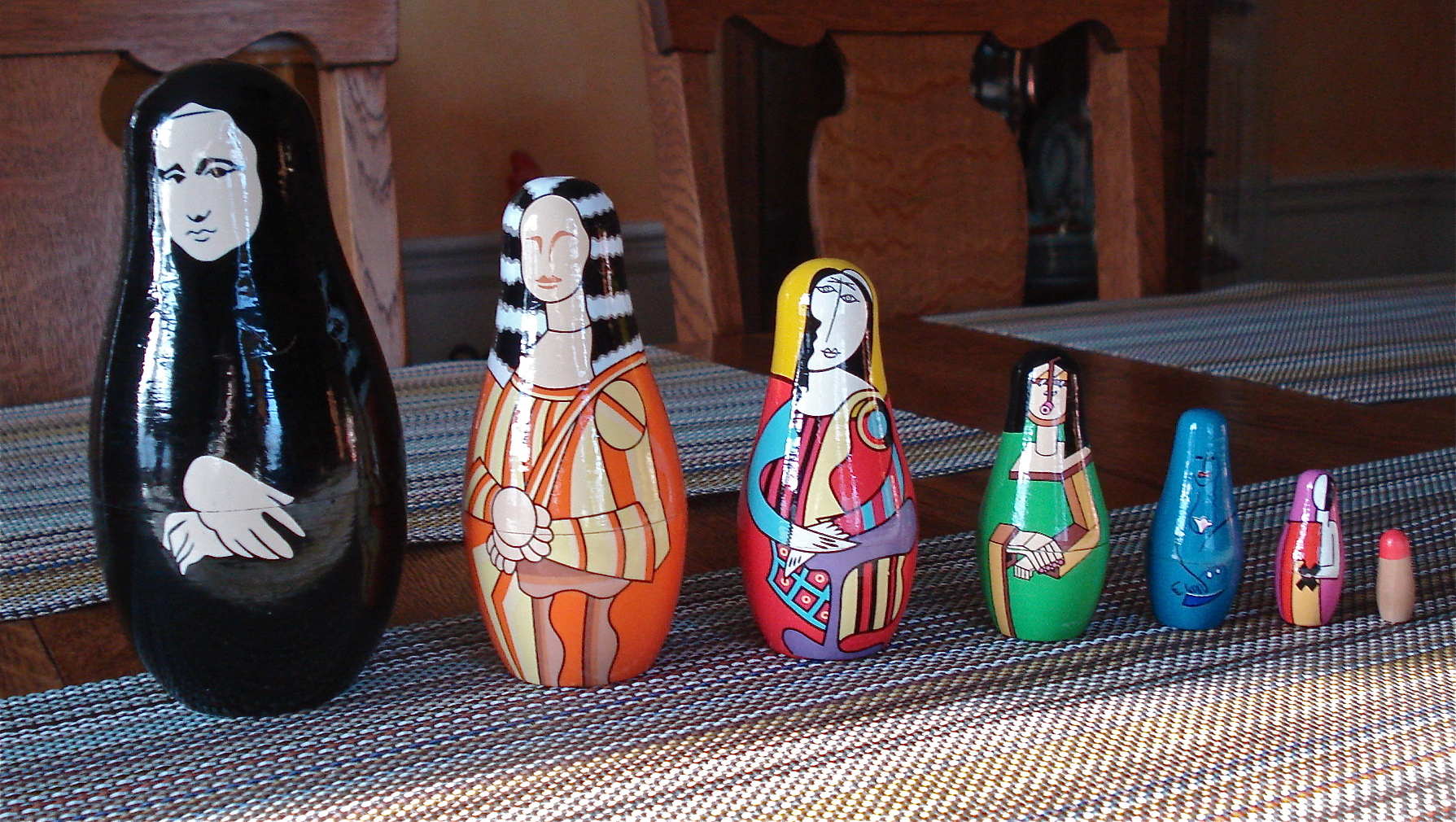
The same problem with the Venus de Milo: It was so crowded that I couldn’t see her arms. We were able to see Michelangelo’s The Dying Slave.
Sometimes I get to see for the first time a famous work of art that everyone says is a masterpiece, and upon seeing it, it leaves me cold. Other times right away I say to myself, “Yes, they were correct; this is truly a masterpiece,” and I want to slow down and look at it for a long while. Sometimes, I see a piece of art I knew nothing about, and it immediately moves me. Privately, it seems like a masterpiece to me. Art is funny that way. I had all those experiences on this trip, but not at the Louvre. There, the art only left me cold. Did I mention the crowds?
The Musee d’Orsay was a delight. As we waited in a line that snaked back and forth, I kept passing a couple dressed completely in black. The beautiful young woman had raven black hair, a black dress, and black shoes. She looked like she was on the verge of tears, but then our part of the line snaked past her. I saw her again several times as our lines would cross each other again and again. Each time she was on the verge of tears—quite distressed, but I never got to see whether the couple talked or whether she actually started to cry or what happened. I wished I could have learned more about them and worked her into this story, but then I lost them. If I could have found a story for her, I would have called it, “The Girl with the Raven Black Hair who was about to Cry while Waiting in Line for the Musee d’Art,” or maybe for short, “The Girl with the Raven Black Hair.” Art lines are funny that way.
In the museum we saw art that moved me—great impressionist and post impressionist paintings, especially those by Cezanne and by Van Gogh. Beth and I were completely surprised by a wonderful exhibit of art deco paintings, sculpture, and furniture that we could not remember seeing on our last visit. What a wonderful museum—spacious and intimate at the same time, with a building that is also a moving work of art.
The book I read during our trip was Ernest Hemmingway’s A Moveable Feast, first published in 1964, quite appropriate for our visit. Hemingway describes his experiences while living in Paris. At one point in the book, he tells of a conversation he had with Gertrude Stein who gave him this advice.
“You can either buy clothes or buy pictures,” she said. “It’s that simple. No one who is not very rich can do both. Pay no attention to your clothes and no attention at all to the mode….”
“But even if I never bought any more clothing ever,” I said, “I wouldn’t have enough money to buy the Picassos I want.”
“No. He’s out of your range. You have to buy the people of your own age….You’ll know them….”
Those are my sentiments exactly regarding clothes and art, to the dismay of Beth, but that advice is easier said than done. In our wanderings, we did run into one store that sold toilet paper in all hues. Now here was a work of art that I could afford.
I have always made fun of “bus people” who get off a bus tour in swarms and quickly march through some tourist attraction. However, for one day we became bus people. We took a tour to the Normandy coast to visit Mont Saint-Michel, a small island fortress first inhabited in the eighth century when a church was built at the top of the mountain. Later, an abbey was built by Benedictine Monks. What a fortress—a small island rock, surrounded by water at high tide but close to the mainland. At the top was the church to God, then the abbey and the austere monks, then the storehouses and working areas for copying holy books, and at the bottom the shops and homes (and narrow streets) of the townsfolk. This religious fortress was never conquered and played a role in France’s William the Conqueror taking over England as well. It later became a prison and was then turned back into a monastery, as it remains to this day (with about 60 townsfolk and shop keepers living near the bottom on the edge of the rock). We had a most wonderful tour guide who took as through the entire history of the place as we toured it from top to bottom (and she climbed slowly enough to the top that even I could make it). This island is certainly one of the special places on earth.
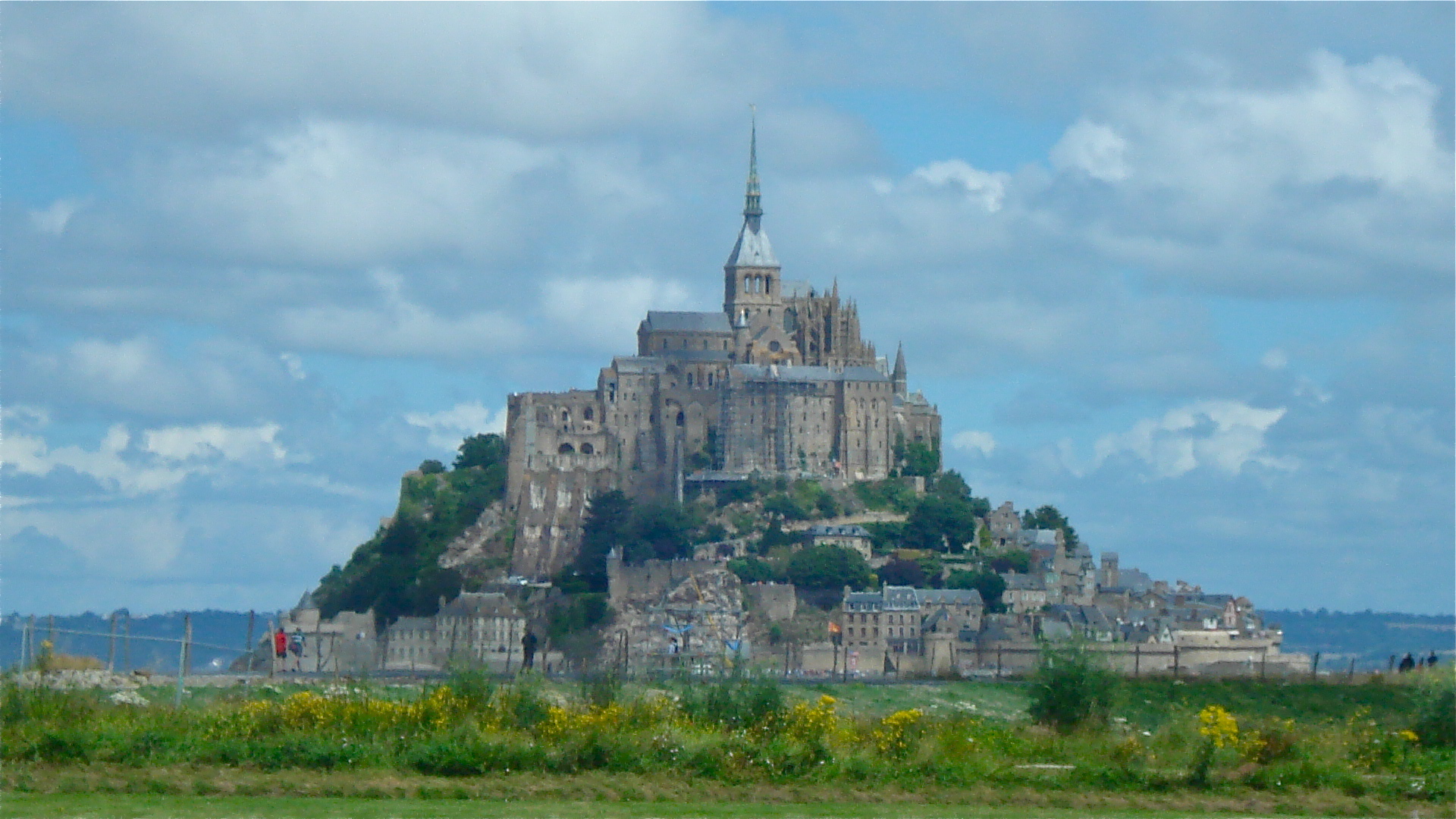

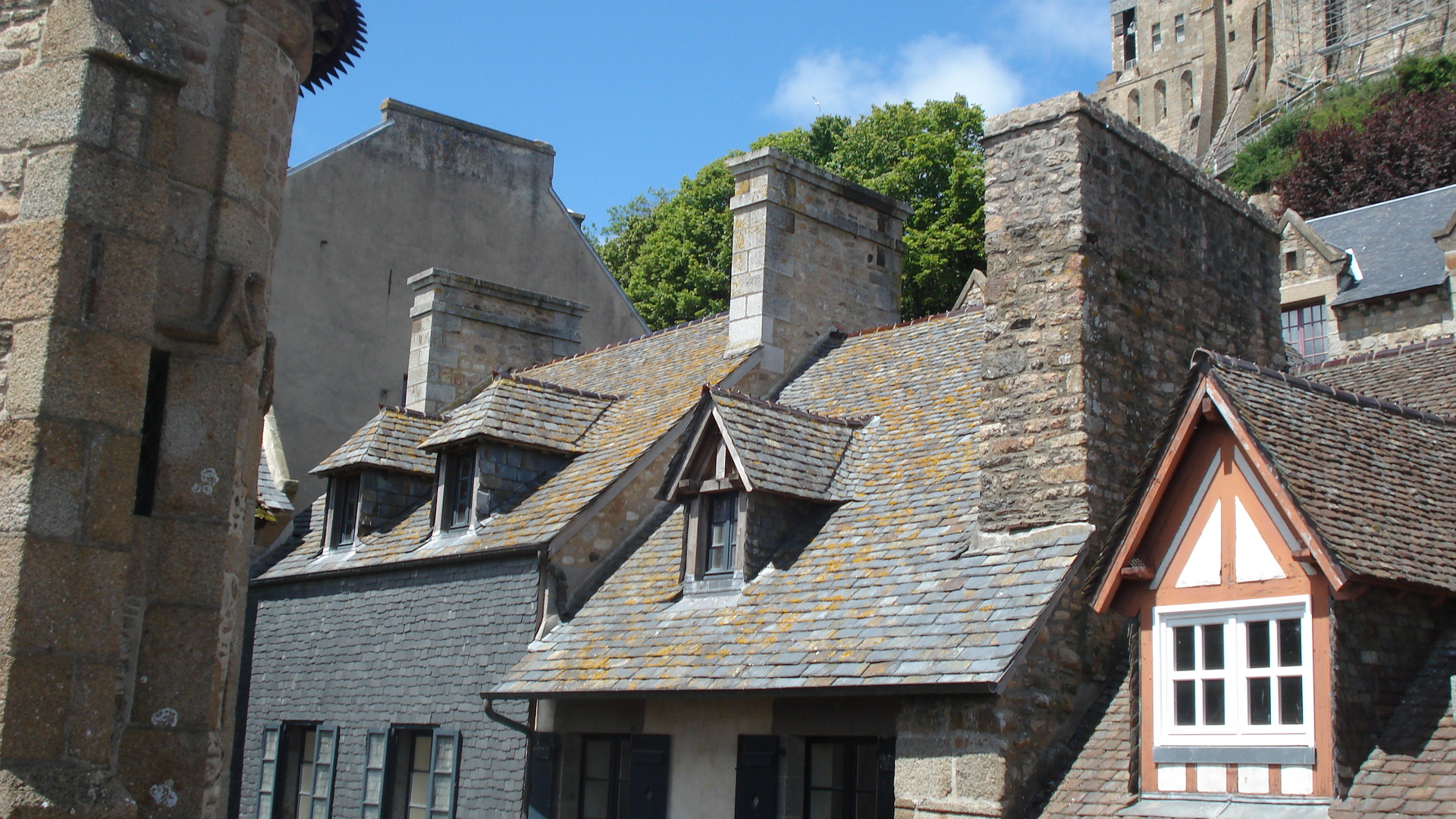
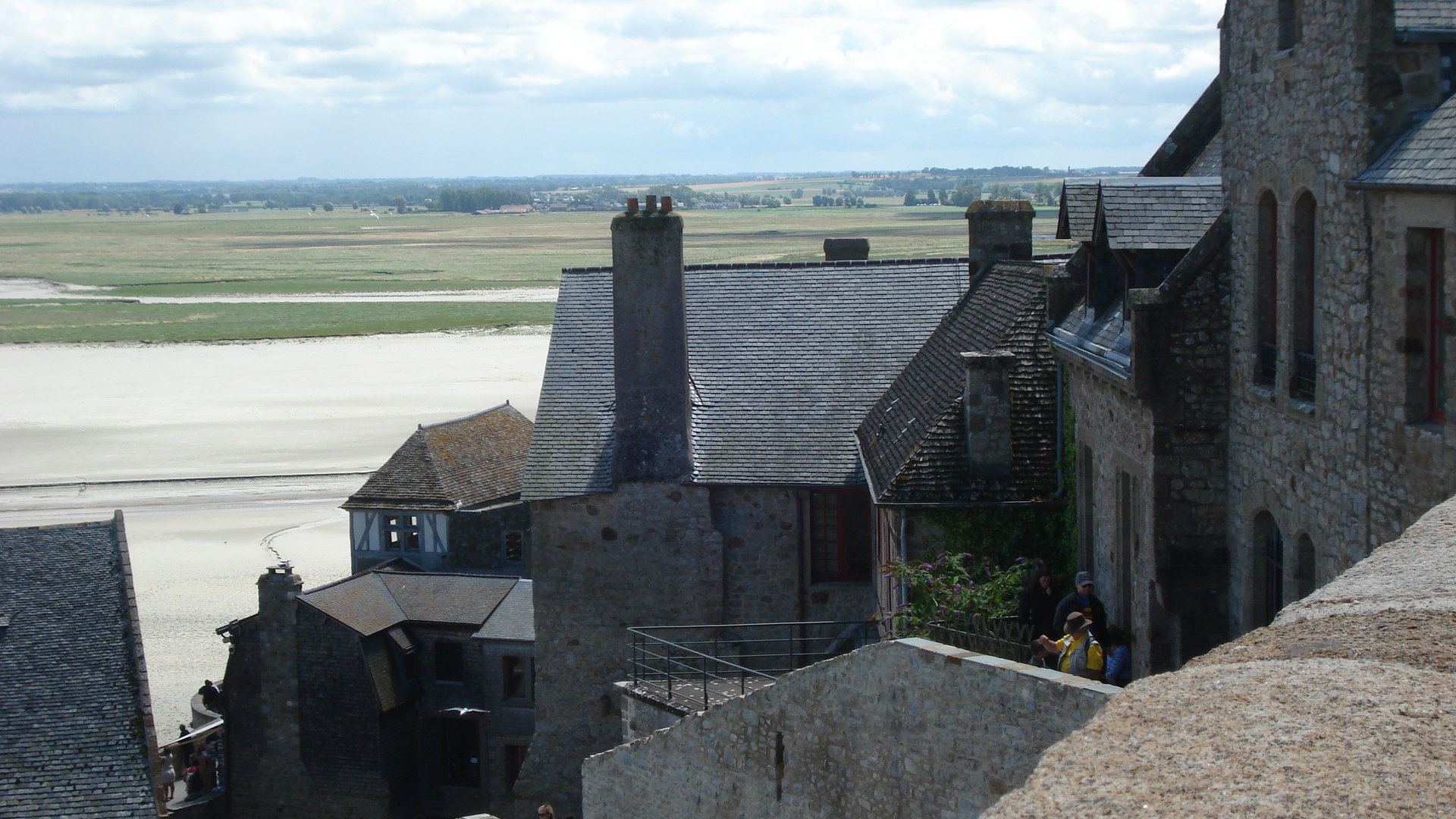
Another day we took a train to Versailles to visit the palace there. Our young tour guide was excellent—a combination historian and story teller. I believe that she was a rogue guide. To my delight, she did not dwell on the riches and works of art in this famous palace but told us with great enthusiasm the story of Louis the XIV, the most famous and important French king in a long line. Sure, Louis XVI and his wife, Marie Antoinette, were famous for being beheaded during the French revolution, but Louis XIV, the Sun King, was the one who truly made Versailles the grand palace it is and who reigned for the longest time. (In France, it is easy to remember the names of the kings; they are all named Louis; none of this confusion with Henry and William, and George and Charles, as in England.)
Our tour guide had been busy studying the history of Louis XIV and had even read the diaries and reports of his physicians. She was excited to tell us what she had learned. Louis the XIV was a despicable, little man (I mean short)—fat, egotistical, vain, selfish, bald at 19, and prone to many whims. He spent the country’s wealth on himself like few others had done. He wore lavish clothes with high heels and high wigs to make him appear taller. Because he didn’t bathe or brush his teeth, he wore gallons of perfume (probably everybody did in his court). He had 16 plus children, not only with his wife but with his many mistresses as well, who all lived in the palace. He required that selected members of his court—men and women—watch him as he retired to bed for the night and be there to watch him arise in the morning, and watch him eat, and dress, and even use the toilet. He threw elaborate parties, with dancing and eating and gambling (for the men, while the women sat around and observed). The games were rigged. He was the only one who ever won, and all the men and especially the women were required to applaud and exclaim how wonderful he was. All the paintings and sculptures of him portrayed him as a great, tall, muscular Greek hero with a six pack for abs and legs that a dancer would envy. It was the French early form of photo shopping. Yet for a good part of his life, he had severe bowl problems, warts all over his face, disfigured legs (so that he needed a wheel chair to get around), and he lost not only his teeth but his upper palate so that there was a gaping hole from his mouth into his nose cavity. When he ate, food would drip out through his nose, and his breath was atrocious. It would not have been an easy job to be his mistress. Imagine French kissing that creep (I assume the French did French kissing). Sun King indeed! So much for the good, the bad, and the ugly of Versailles and the French royalty.
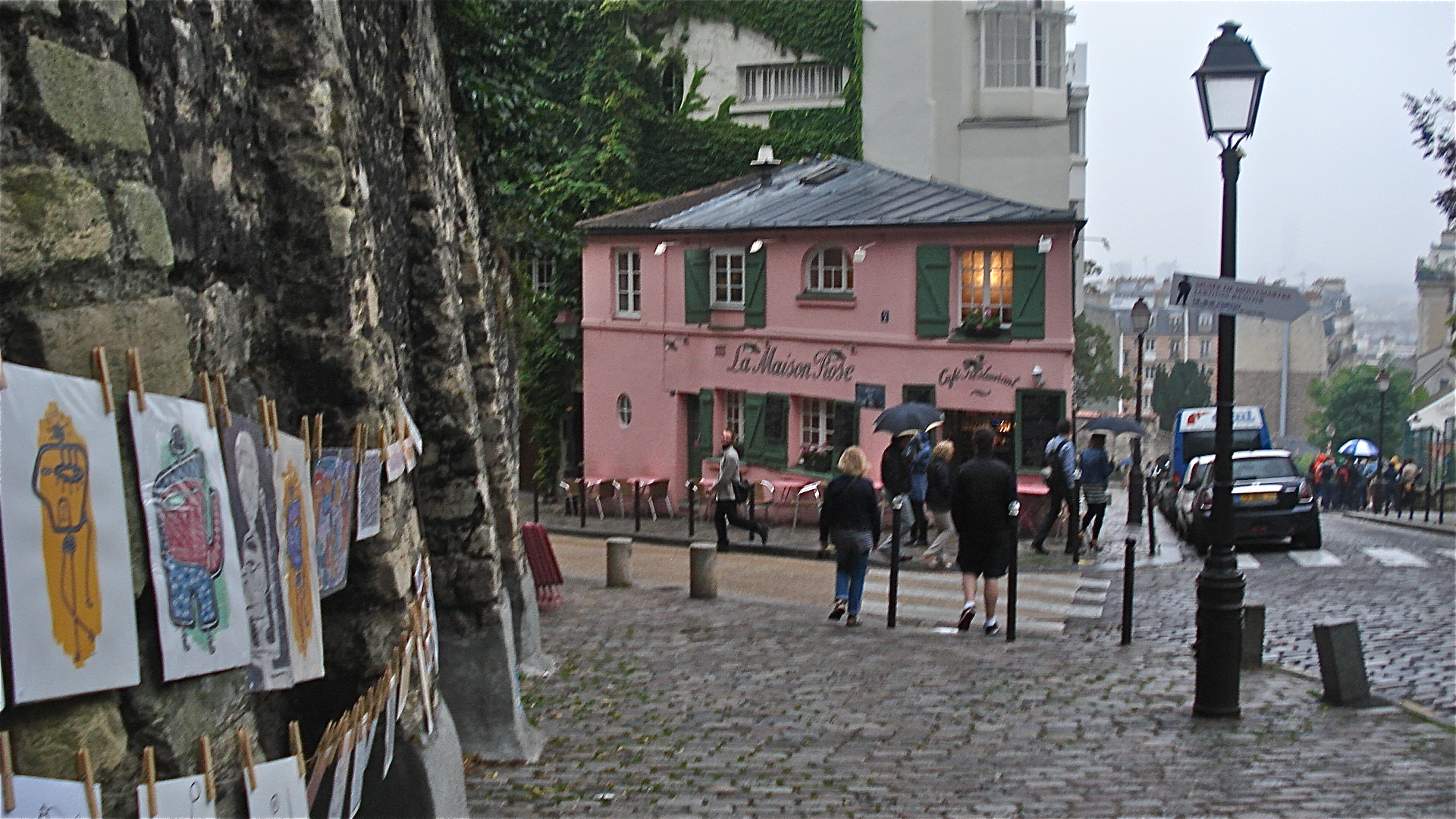
After returning to Paris, we visited several market streets—rue Cler and rue Mauffetard stand out. We watched a group of children feed a flock of ravens, and I thought of the girl with the raven black hair.
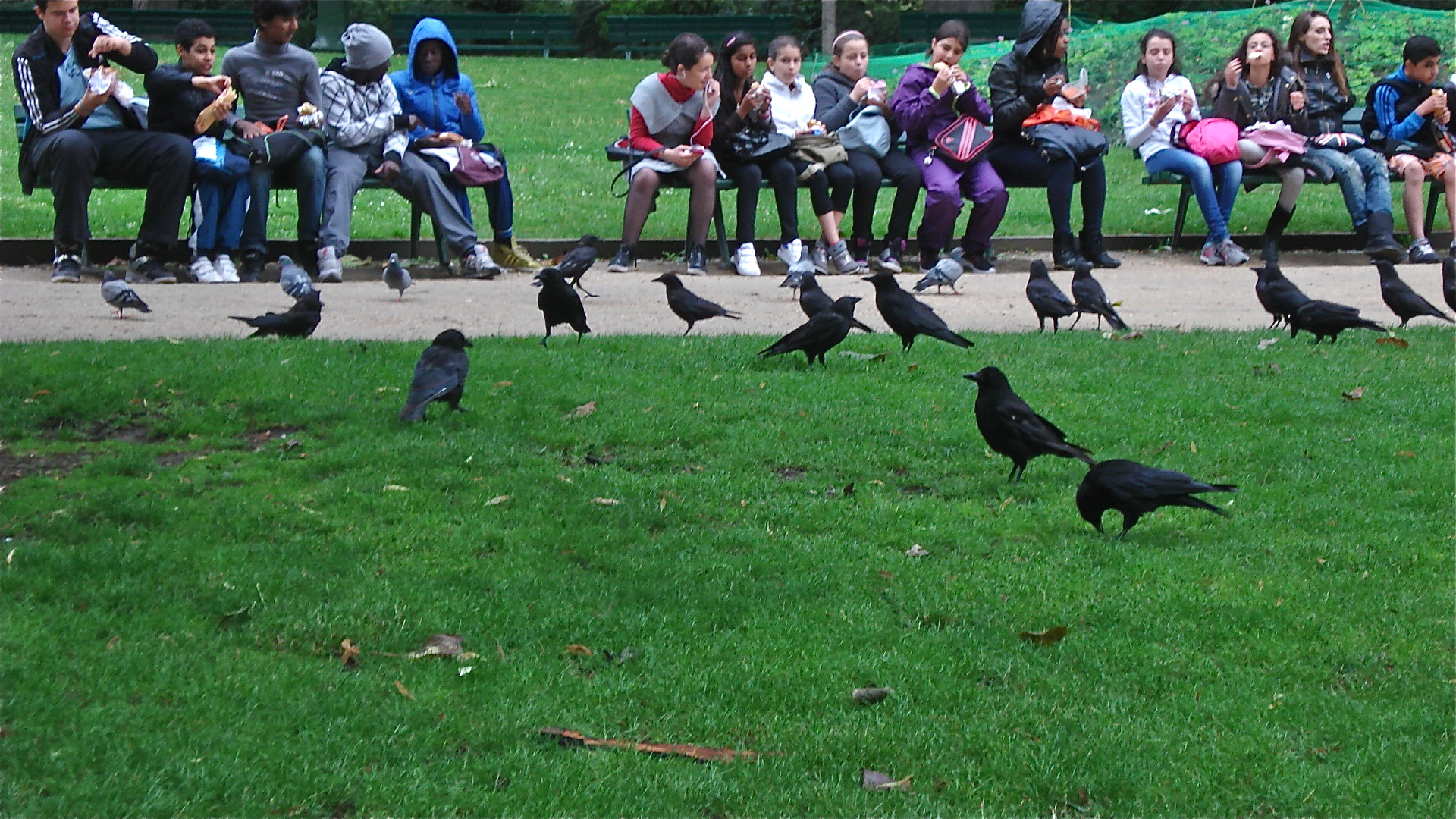
We ate at an excellent restaurant, Le Corsi, on rue Cujas near our hotel and the Pantheon (a Corsican restaurant with supreme food).
We had spent most of our time on the left bank; so we crossed over to the right bank and meandered through neighborhoods until we reached the Sacre Coeur Basilica in Montmartre, the highest point in Paris. This church is of relatively new construction, not completed until 1914. We waited inside for what we supposed to be a devotional with singing nuns. Instead we ended up attending mass. Here we were, in the heart of religious and moral Paris, yet also in the heart of the former communist and rebellious center of the city.
We thought we would eat in Montmarte, but instead just wandered around and got lost. However, we did, fortuitously, run onto a street of music stores. Inside one, Ethan played an excellent electric bass guitar. Inside another, we both tried out an electric, upright bass. As always, Ethan sounded good. So, we fantasized that we were playing a gig in Montmartre as part of the Parisian jazz scene while being adored by a bunch of morally dubious groupies.
At one point when I pulled out a map to try to figure out where we were and how we could find a Metro stop to get back to our hotel, a young woman asked us if she could help us. She not only directed us to the nearest Metro stop, she went out of her way to walk us there to make sure we found it. She said that she had a best friend who lived in Boston and hoped that someday she could visit her. When we left her, we of course thanked her, and I said, “Your English is excellent.” She looked at me with confusion and said, “Well of course, as I mentioned, I am from Australia.” I do miss much of conversations to the embarrassment of my family.
At this point I have to say that we approached every city on our trip with the expectation that the people would be friendly, helpful, and courteous, even in Paris. And indeed they were, even in Paris. And Beth’s rusty French got better and better the longer we were there.
There is one severe problem that the city has at present—a plethora of pick pockets. We were warned about them; so Ethan and I carried our wallets in our front pockets with elastic bands around them so that they would not slip out easily. Beth held her bag tightly. We had no problems but experienced others who did. One American we talked to had a pick pocket try to get his wallet. The man yelled at the would-be thief and talked in an assertive manner, and the guy ran away. On another occasion we were going down into the subway and a woman in front of us (from Japan) began to scream. A young man and a young woman had accosted her and tried to grab her bag. I stepped over to the young man and yelled at him to stop and to stay where he was, as he tried to get away. Out of nowhere other men swooped in and grabbed the man and the woman and held them and then put handcuffs on them. They were plain-clothes police assigned to the subways to try to curtail the pick pocketing. I guess the yelling helped. The young woman looked completely scared, but the young man looked defiant.
That evening, back again in the Latin Quarter, we came upon what I first took for an inter-cultural festival, with middle-eastern flags, singing and chanting. I thought, “This is great; we can listen to the music and eat some great food.” But as soon as I heard people screaming, “Death to America,” I knew this wasn’t the festival for us. Soon swarms of gendarmes, dressed in flak jackets and carrying clubs, rushed in to surround the large mass. They looked like teenage mutant Ninja turtules. We were in the midst of a Middle-Eastern demonstration (and I later learned that days before a similar group had caused trouble with an anti-Israeli demonstration). The police, as well as the demonstrators, looked like they meant business.; so we beat it out of there.
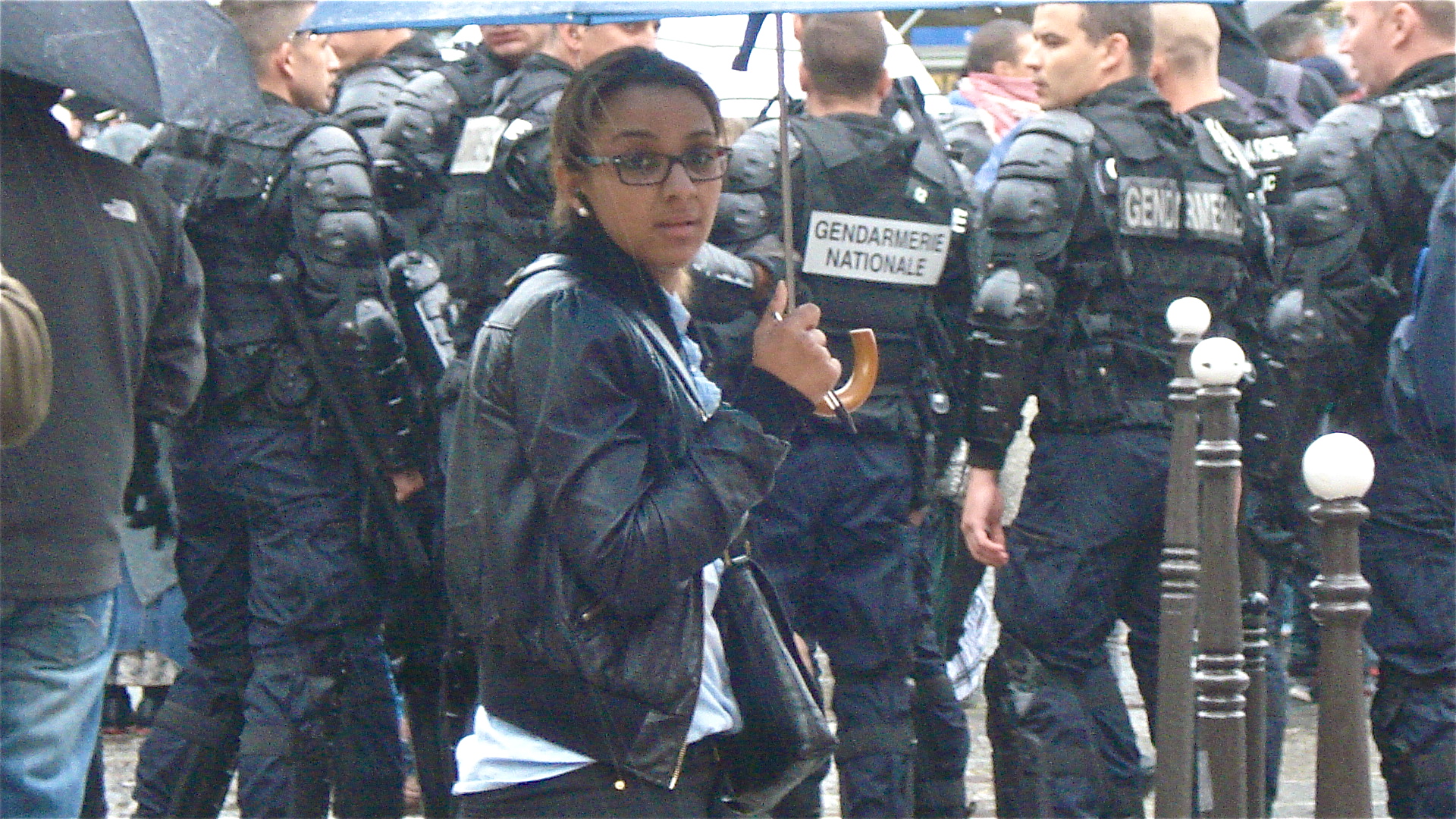
On our last day in Paris we visited the Ile de Saint-Louis, the second island in the Seine in the middle of the city, and went into several unusual shops. We ate lunch at another restaurant that Alwina had suggested—the most excellent Les Fous de L’Ile on rue des Deux Ponts. For dessert we had the best ice cream ever at the same place where Beth and I had been years before, Berthillon.
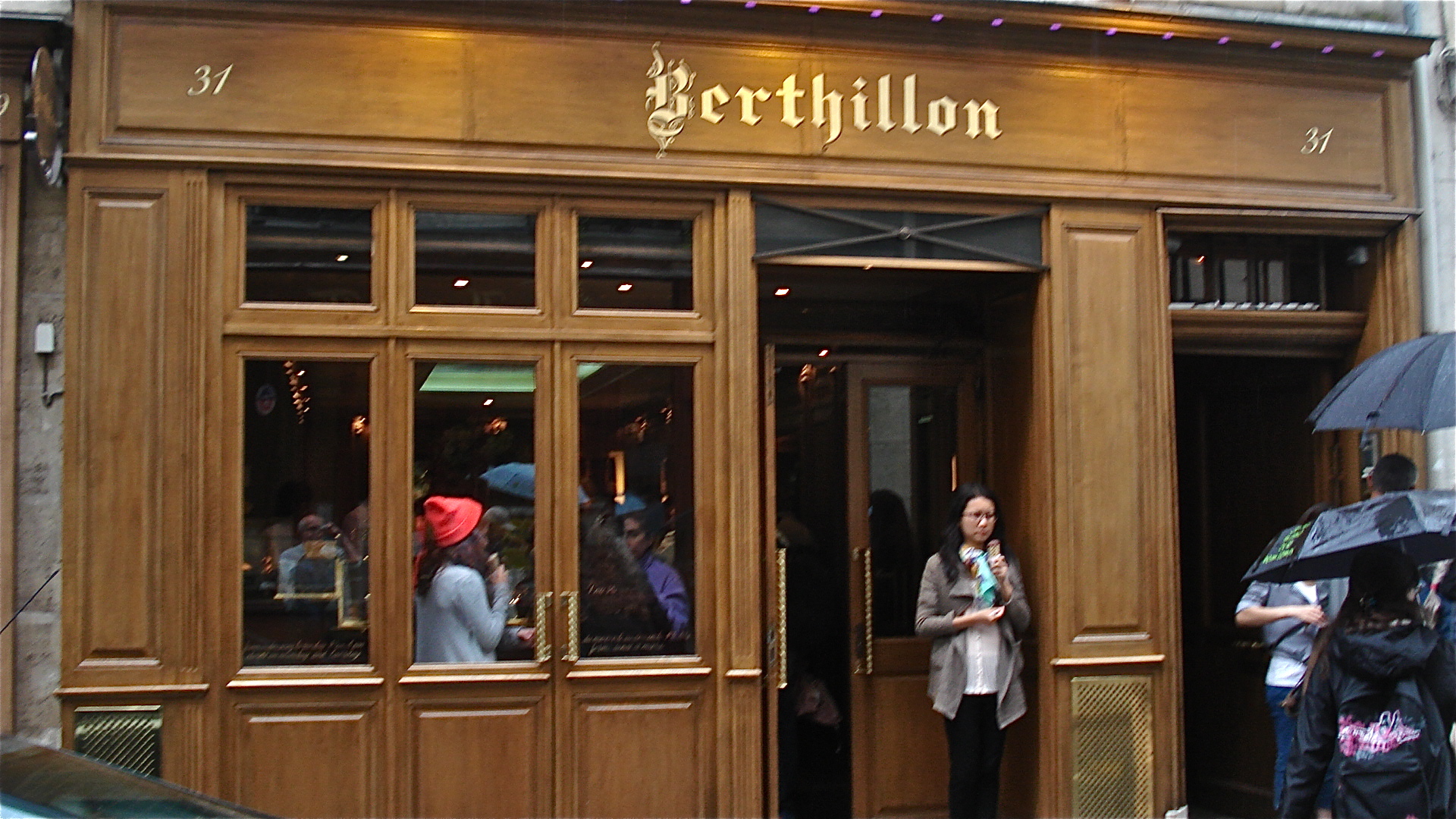
I love Paris every moment.
Then we took the train to Bruges.


